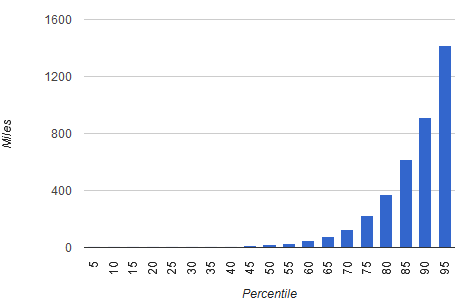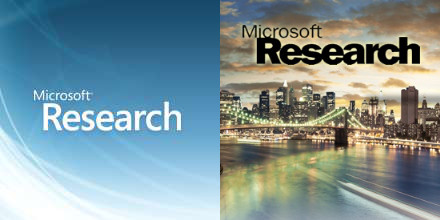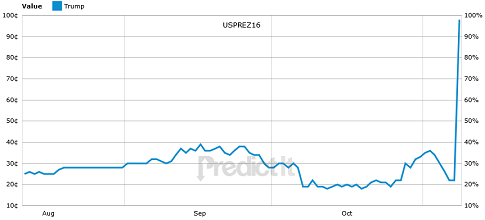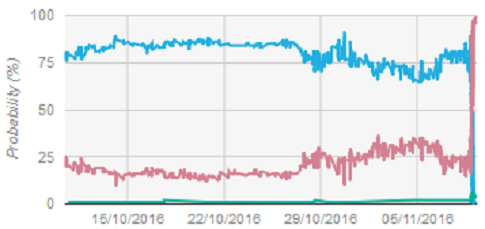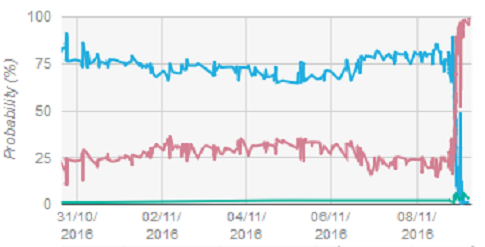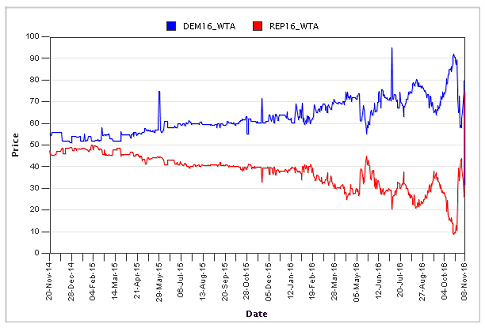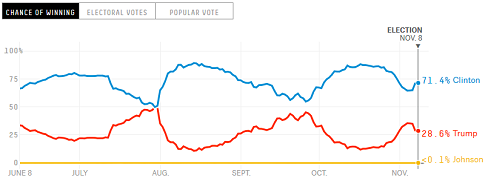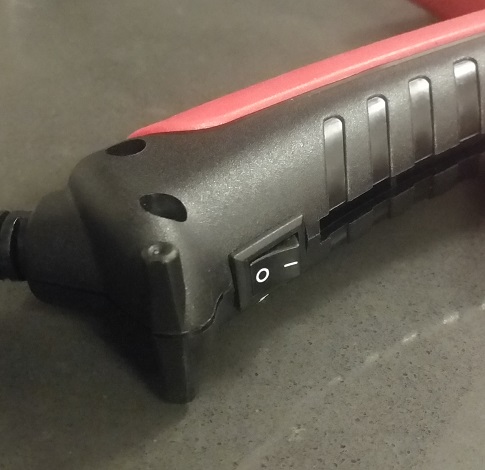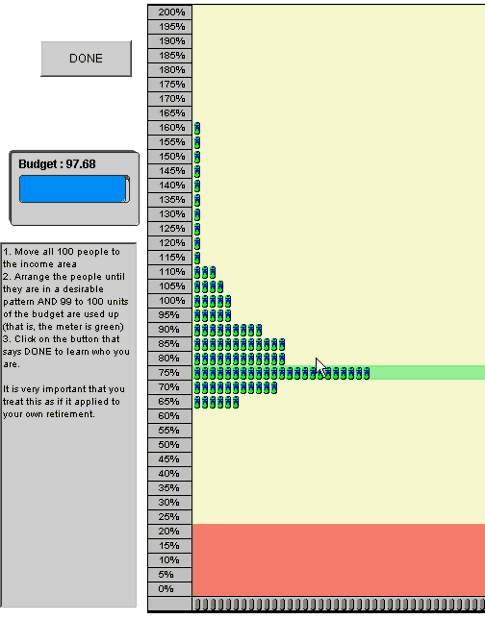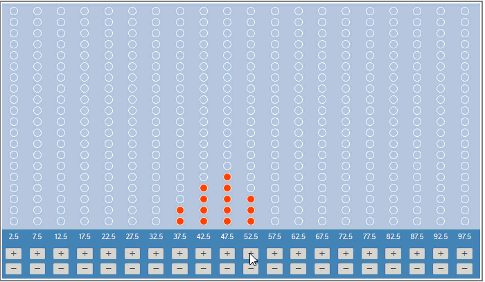HERE IS WHAT YOU CAME UP WITH

The author’s daughter’s tool kit
A while back, Decision Science News put out a call on the Society for Judgment and Decision Making email list looking for “tools, methods to improve decision making, outcomes, and information communication / visualization”:
I’m interested in learning about tools and methods people in this community have created to improve decision making, decision outcomes, and information communication / visualization. It would be good to have examples of things that are a) finished, codified b) tested for effectiveness. Bonus points if they are field tested and/or tested for long-term retention
This would include things like:
* Training programs incl. games, videos, procedures, tutorials
* Decision aids, calculators
* Elicitation techniques (e.g. SPIES, …)
* Changes in information format (e.g. frequency formats, …)
* Policies, procedures (e.g. Save More Tomorrow, …)
* Feats of choice architecture (e.g., reordering, ….)
To make the resulting list more useful to the community, it might be wise to structure your submissions like this:
Tool / method name:
One sentence description:
One sentence effectiveness test result:
Relevant cite(s):
Here are the responses we received. If you have more, put them in the comments, but please structure them as suggested above.
####################
DISTRIBUTION BUILDERS
These tools are similar to the Distribution Builder (*) tool for eliciting probability distributions
(*) Goldstein, Daniel G., Johnson, Eric J. & Sharpe, William F. (2008). Choosing outcomes versus choosing products: Consumer-focused retirement investment advice. Journal of Consumer Research, 35(3), 440-456.
Quentin Andre’s Javascript Distribution Builder: https://quentinandre.github.io/DistributionBuilder
Don Moore and Uriel Haran’s SPIES elicitation tool: http://fbm.bgu.ac.il/lab/spies/spies.html
Charlie Strout’s Javascript Distribution Builder: https://github.com/sevenshadow/DistributionBuilder
####################
GALLONS PER MILE TOOL
Rick Larrick and Jack Soll created an online GPM (gallons per mile) calculator to help people compare cars/trade ins. http://gpmcalculator.com/
Cite:
Larrick, R. P., & Soll, J. B. (2008). The MPG illusion. Science, 320(5883), 1593.
####################
DECISION TIME LIMITS
Ian Krajbich writes “By imposing per-decision time limits, we help people divert time from difficult unimportant decisions to easier important ones.”
Effectiveness test result: Time-constrained subjects achieve better objective outcomes (higher earnings) when they have per-decision time limits, compared to when they are left to allocate time to decisions on their own.
Cite:
Oud B, Krajbich I, Miller K, Cheong JH, Botvinick M, Fehr E. 2016 Irrational time allocation in decision-making. Proc. R. Soc. B 283: 20151439. http://dx.doi.org/10.1098/rspb.2015.1439
####################
BALANCE BEAM AID FOR INSTRUCTION IN DIAGNOSIS
Rob Hamm writes “The log odds formula for combining multiple independent diagnostic cues corresponds to the formula for combining the impact of equal weights (and helium balloons) placed at different positions on a balance beam. We constructed a demonstration for one medical diagnosis domain (acute chest pain).”
Effectiveness test result: The math works if we make the naïve Bayesian assumption of independent impacts of different pieces of evidence. A small sample of medical students and faculty played with the program and found it reasonable.
Cites:
Hamm RM, Beasley WH, Johnson WJ. A balance beam aid for instruction in clinical diagnostic reasoning. Medical Decision Making 2014; 34(7):854-862 (doi: 10.1177/ 0272989X14529623).
Hamm RM, Beasley WH. The balance beam metaphor: A perspective on clinical diagnosis. Medical Decision Making 2014; 34(7):841-853 (doi: 10.1177/0272989X14528755).
####################
PACE-O-METER TO IMPROVE PEOPLE’S ESTIMATIONS OF TIME-SAVINGS WHEN INCREASING SPEED
Eyal Pe’er writes: “An enhanced speedometer that presents, alongside regular speed information, the pace of minutes required to complete 10 miles/km at given levels of speed (http://journal.sjdm.org/12/121007/fig2.png)
Effectiveness test result: When asked to estimate time saved when increasing speed (at various levels) participants who received the “paceometer” were correct at an overall average rate of about 58% compared to less than 20% in the control conditions. In another study, similar results were found on driving behavior using a driving simulator.
Cites:
Peer, E., & Gamliel, E. (2013). Pace yourself: Improving time-saving judgments when increasing activity speed. Judgment and Decision Making, 8(2), 106.
Eriksson, G., Patten, C. J., Svenson, O., & Eriksson, L. (2015). Estimated time of arrival and debiasing the time saving bias. Ergonomics, 58(12), 1939-1946.
####################
PROSTATE CANCER TREATMENT DECISION AID
Maarten Cuypers writes: “Online tool with risk communication and values clarification exercise to support treatment selection in (early) prostate cancer patients”
Effectiveness test result: More knowledge, more value congruent treatment choices, though lower information satisfaction.
Cites:
Cuypers, Maarten, Lamers, Romy, Kil, Paul, Poll-Franse, L. van de, & Vries, Marieke de (2015). Impact of a web-based treatment decision aid for early-stage prostate cancer on shared decision-making and health outcomes: Study protocol for a randomized controlled trial. Trials, 16(231)
Lamers, R.E.D., Cuypers, M., Vries, M. de, Poll-Franse, L. van de, Bosch, J.L.H.R., & Kil, P.J.M. (2016). How do patients choose between active surveillance, radical prostatectomy and radiotherapy?: The effect of a preference sensitive decision aid on treatment decision making for localized prostate cancer. Urologic Oncology: Seminars and Original Investigations
####################
SIMULATED EXPERIENCE
Emre Soyer writes “A simulation based on a model (e.g., regression), which allows decision makers to enter their inputs and sequentially observe (also graph and/or store) the estimated outcomes.”
Effectiveness test result: In different contexts, participants related easily with the tool, trusted their simulated experience more than their own analyses based on descriptions, and made more accurate judgments about uncertainties.
Cites:
Hogarth, R. M., & Soyer, E. (Winter 2015). Simulated experience: Making intuitive sense of big data. MIT Sloan Management Review, p. 49-54. (sloanreview.mit.edu/x/56215)
Hogarth R. M., & Soyer E. (2015). Communicating forecasts: The simplicity of simulated experience. Journal of Business Research, 68, 1800-1809
Hogarth R. M., & Soyer E. (2015). Providing information for decision making: Contrasting description and simulation. Journal of Applied Research in Memory and Cognition, 4, 221-228.
Hogarth R. M., Mukherjee, K., & Soyer, E. (2013). Assessing the chances of success: Naïve statistics vs. kind experience. Journal of Experimental Psychology: Learning, Memory and Cognition, 39, 14-32.
Hogarth, R. M., & Soyer, E. (2011). Sequentially simulated outcomes: Kind experience vs. non-transparent description. Journal of Experimental Psychology: General, 140, 3, 434-463.
M.A. Bradbury, T. Hens and S. Zeisberger, “Improving Investment Decisions With Simulated Experience,” Review of Finance, published online June 6, 2014.
C. Kaufmann, M. Weber and E. Haisley, “The Role of Experience Sampling and Graphical Displays on One’s Investment Risk Appetite,” Management Science 59, no.2 (February 2013): 323-340.
B.K. Hayes, B.R. Newell and G.E. Hawkins. “Causal Model and Sampling Approaches to Reducing Base Rate Neglect,” in “Proceedings of the 35th Annual Conference of the Cognitive Science Society,” eds. M. Knauff, M. Pauen, N. Sebanz and I. Wachsmuth (Austin, Texas: Cognitive Science Society, 2013.)
####################
A DIAGNOSTIC SUPPORT SYSTEM (PROTOTYPE) FOR FAMILY PHYSICIANS
Olga Kostopoulou writes “A diagnostic support tool that integrates with the patient’s electronic health record, and presents physicians with diagnostic alternatives (according to patient age, sex, risk factors and current complaint) at the start of the consultation, BEFORE physicians elicit any further information from the patient.”
Effectiveness test result: Presenting family physicians with diagnostic alternatives early on, before eliciting any information themselves, increased diagnostic accuracy both in a study with computer-simulated patients, and in a study with standardised patients (actors).
Cites:
Kostopoulou O, Rosen A, Round T, Wright E, Douiri A, Delaney BC. Early diagnostic suggestions improve accuracy of GPs: a randomised controlled trial using computer-simulated patients. British Journal of General Practice 2015 Jan; 65(630): e49-e54. http://dx.doi.org/10.3399/bjgp15X683161
Kostopoulou O, Porat T, Corrigan D, Mahmoud S, Delaney BC. Supporting first impressions reduces diagnostic error: evidence from a high-fidelity simulation. British Journal of General Practice. In Press.
Note: The tool is still at the prototype stage and has not been field-tested yet. It is based on an ontology of medical diagnostic concepts, and will be open source eventually.
####################
ANALOGICAL ENCODING
Aba Szollosi writes “We tested whether analogical encoding can foster the transfer from learning abstract principles to improving behavioral performance on a range of decision biases.”
Effectiveness test result: The method might be effective in eliminating biases on tasks where the violations of statistical principles are measured.
Relevant cite(s): Aczel, B., Bago, B., Szollosi, A., Foldes, A., & Lukacs, B. (2015). Is it time for studying real-life debiasing? Evaluation of the effectiveness of an analogical intervention technique. Frontiers in psychology, 6:1120. doi: 10.3389/fpsyg.2015.01120
####################
CHEMDECIDE
Richard Hodgett writes about a tool he created to structure complex decision problems. ChemDecide is a suite of software tools which incorporates three Multi-Criteria Decision Analysis (MCDA) techniques: Analytical Hierarchy Process (AHP), Multi-Attribute Range Evaluations (MARE) and ELimination Et Choix Traduisant la REalité trois (ELECTRE III). The software has been used for addressing decisions such as route selection, equipment selection, resource allocation, financial budgeting and project prioritization.
Cite: Hodgett, R. E., Martin, E. B., Montague, G., & Talford, M. (2014). Handling uncertain decisions in whole process design. Production Planning & Control, 25(12), 1028-1038.
 Subscribe to Decision Science News by Email (one email per week, easy unsubscribe)
Subscribe to Decision Science News by Email (one email per week, easy unsubscribe)

